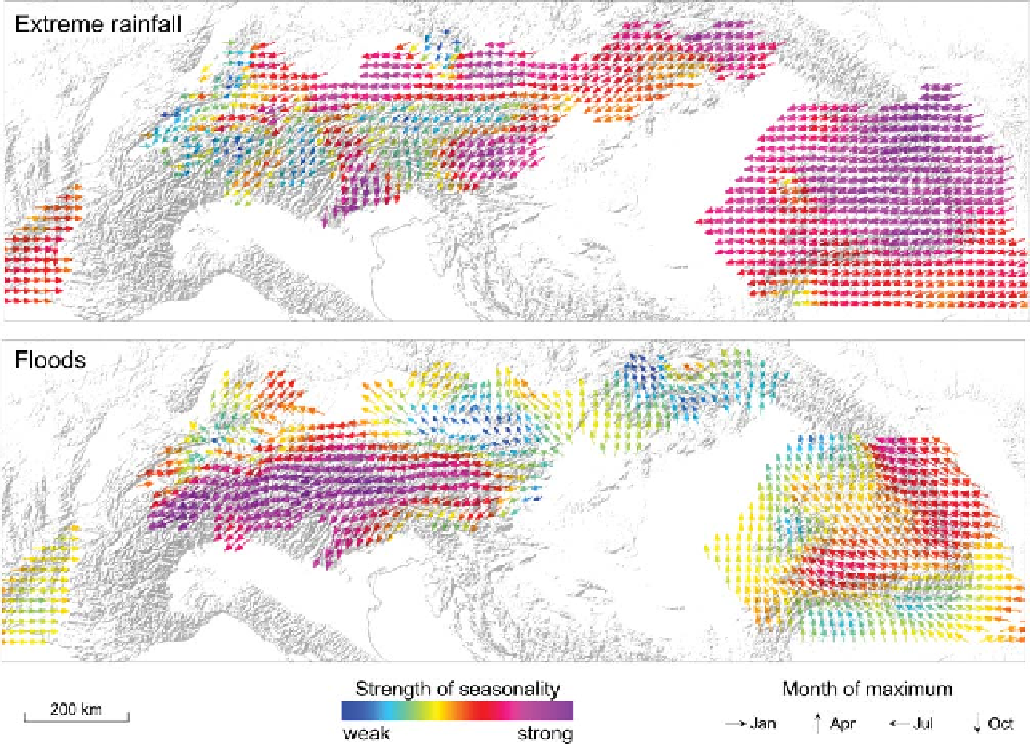Geography Reference
In-Depth Information
Figure 9.2. Seasonality of annual maximum daily precipitation (top) and maximum annual flood (bottom) in Central Europe in the period
1961
-
2000, showing the strength of seasonality (colours) and the season of maxima (directions). The seasonality strength is weak if the events
occur uniformly throughout the year; it is strong if all maxima occur in the same period of the year. From Parajka et al.(
2010a
).
9.2.1 Processes
Climate forcing
Floods can be generated by a range of processes related to
extreme rainfall. Depending on the meteorological condi-
tions, extreme rainfall can be produced by convective
storms where a strong updraft of warm moist air due to
buoyancy effects in the atmosphere is often produced by
strong radiation. These storms often cover small spatial
scales of a few kilometres, last for a few hours or less,
and can reach very high intensities. Rainfall can also be
produced by large-scale atmospheric mechanisms due to
dynamic lifting or orographic effects (synoptic events).
This rainfall usually covers larger space scales and has a
longer duration though the intensities may be lower.
Advection of moist air from the sea is extremely important
in various settings, e.g., France (Gaume et al.,
2002
), and
in particular in tropical or sub-tropical regions where cyc-
lones occur (e.g., Hirschboeck,
1987
; House and Hirsch-
boeck,
1997
). Floods can also be produced by snowmelt in
cold regions and rain on snow events (Waylen and Woo,
1982
; Stedinger et al.,
1993
; Sui and Koehler,
2011
; Merz
and Blöschl,
2003
).
The flood frequency curve is the combined effect of
rainfall variability at many time scales and the interactions
with landscape dynamics, in particular the soil moisture
and snow processes (e.g., Robinson and Sivapalan,
1997b
;
Sivapalan et al.,
2005
). Flood processes are often seasonal,
i.e., the floods do not occur in all months with the same
probability. In several parts of the world seasonality of
climate is strong, and there are significant differences
between different regions on account of the differences in
seasonality. The interplay between atmospheric processes
and the catchment state (soil moisture and snow) is illus-
trated in
Figure 9.2
for the Alps and Carpathians in Europe.
In the northern part of the Alps the annual precipitation
maxima typically occur in July and August (arrows in
Figure 9.2
top, pointing left) and closer to the Mediterra-
nean extreme rainfall occurs later in the season. The timing

Search WWH ::

Custom Search